The Wolverine
Get a taste of what awaits you in print from this compelling excerpt.
(Note: Unfortunately the original article by Tom O'Neill is no longer available as an entire web-page so there is not further reading available however the original link to the page still currently works).
Photograph by Antti Leinonen
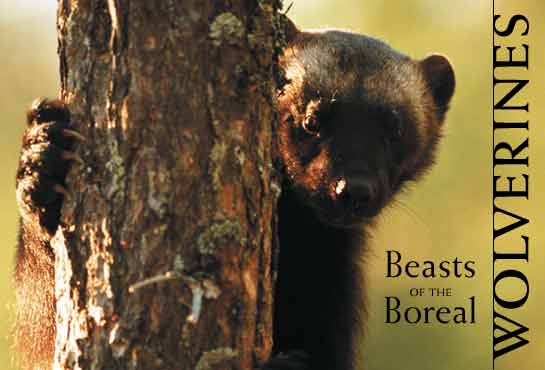 Enter the deep forests of Finland and meet the misunderstood wolverine: shy, playful, and opportunistic.
Enter the deep forests of Finland and meet the misunderstood wolverine: shy, playful, and opportunistic.
Tall tales and superstitions cling to the wolverine like a sorcerer’s cloak, thickly furred. A wolverine will leap from a tree to kill a reindeer. It will shadow a trapper and break down his door to devour him. Sleeping under a wolverine skin condemns a person to endless hunger.
Naturalists who study wolverines and have seen their bared teeth and flashing claws understand the roots of these exaggerated tales. Yet this carnivore, which weighs up to 45 pounds (20 kilograms) and is the largest terrestrial member of the weasel family, would rather run up a tree or duck into a den than fight anything its size or larger.
Rodents, fish, reptiles, and birds are favorite prey, but wolverines usually prefer carrion. Gulo gulo—the glutton—is a prime scavenger who buries for later use some of the meat it tears off. Having observed this wary creature in the forests surrounding Kuhmo, Finland, for 15 years, photographer Antti Leinonen provides rare glimpses of the true wolverine—a shy, secretive opportunist with a penchant for play.
Wolverine - habits and habitat
This article can be found on the National Geographic Website
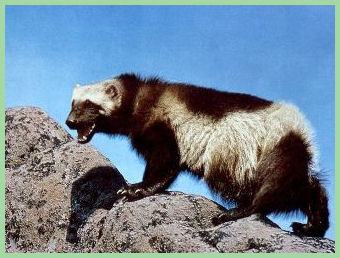
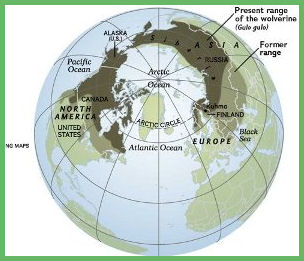
The largest member of the weasel family, wolverines are fierce hunters, feeding on small rodents and even weakened caribou. Photograph courtesy National Park Service
The wolverine is a powerful animal that resembles a small bear but is actually the largest member of the weasel family.
These tough animals are solitary, and they need a lot of room to roam. Individual wolverines may travel 15 miles (24 kilometers) in a day in search of food. Because of these habitat requirements, wolverines frequent remote boreal forests, taiga, and tundra in the northern latitudes of Europe, Asia, and North America.
Wolverines eat a bit of vegetarian fare, like plants and berries, in the summer season, but this does not make up a major part of their 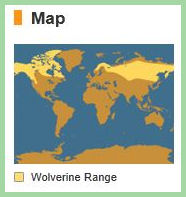 diet—they are tenacious predators with a taste for meat. Wolverines easily dispatch smaller prey, such as rabbits and rodents, but may even attack animals many times their size, such as caribou, if the prey appears to be weak or injured. These opportunistic eaters also feed on carrion—the corpses of larger mammals, such as elk, deer, and caribou. Such finds sustain them in winter when other prey may be thinner on the ground, though they have also been known to dig into burrows and eat hibernating mammals.
diet—they are tenacious predators with a taste for meat. Wolverines easily dispatch smaller prey, such as rabbits and rodents, but may even attack animals many times their size, such as caribou, if the prey appears to be weak or injured. These opportunistic eaters also feed on carrion—the corpses of larger mammals, such as elk, deer, and caribou. Such finds sustain them in winter when other prey may be thinner on the ground, though they have also been known to dig into burrows and eat hibernating mammals.
Males scent-mark their territories, but they share them with several females and are believed to be polygamous. Females den in the snow or under similar cover to give birth to two or three young each late winter or early spring. Kits sometimes live with their mother until they reach their own reproductive age—about two years old.
Wolverines sport heavy, attractive fur that once made them a prime trapper's target in North America. Their fur was used to line parkas, though this practice is far less common today and the animals are protected in many areas.
The Wolverine - the unknown predator of the far North
Along with well known carnivores like wolves and lynxes the Campaign for Europe's Carnivores works for lesser known meat eating mammals. One of these is the Wolverine.
The Wolverine has always been a mysterious animal. People once thought that is was really the runt of a bear litter who didn't get enough food so never grew up to be a fully grown bear. In the Middle Ages, the wolverine was thought to have a ravenous appetite, anyone who slept on a wolverine skin would always be hungry - wolverines are still known by their other name, the glutton. Today we know much more thanks to radio-telemetry research projects in Sweden and Norway.
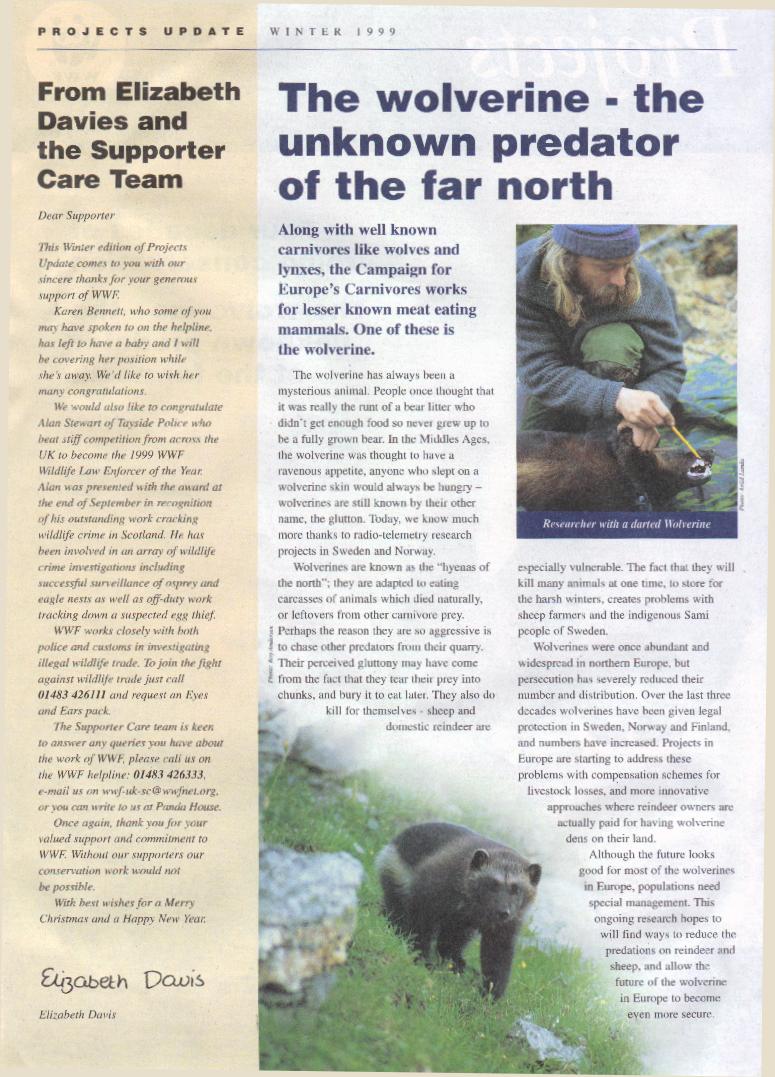
Wolverines are known as the 'hyenas of the north'; they adapted to eating carcasses of animals which died naturally, or left overs from other carnivore prey. Perhaps the reason they are so aggressive is that they chase other predators from their quarry. Their perceived gluttony may have come from the fact that they tear their prey into chunks, and bury it to eat later, They also do kill for themselves - sheep and domestic reindeer are especially vulnerable. The fact that they will kill so many animals at one time, to store for the harsh winters, creates problems with sheep farmers and the indigenous Sami people of Sweden.
Wolverines were once abundant and widespread in northern Europe, but persecution has severely reduced their number and distribution. Over the last three decades wolverines have been given legal protection in Sweden, Norway and Finland and numbers have increased. Projects in Europe are starting to address these problems with compensation schemes for livestock losses, and more innovative approaches where reindeer owners are actually paid for having wolverine dens on their land.
Although the future looks good for most of the wolverines in Europe, populations need special management. This ongoing research hopes to find ways to reduce the predations on reindeer and sheep, and allow the future of the wolverine in Europe to become even more secure.
(Note: I have reproduced the article for ease of reading regrettably there is no weblink available to this article.)
Return to Top / Angelique Home Page / Home Page
Page refreshed : 9th January 2017
